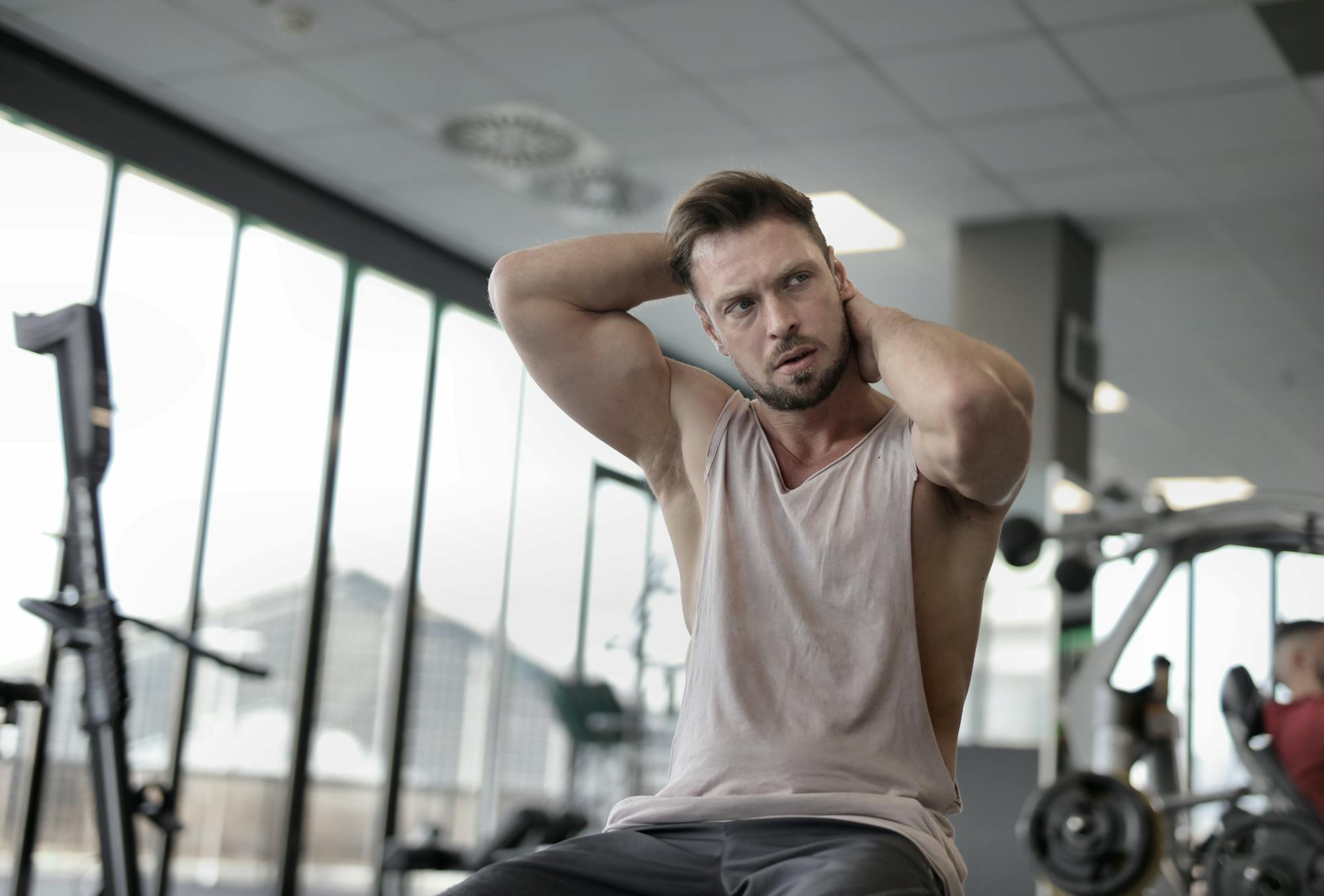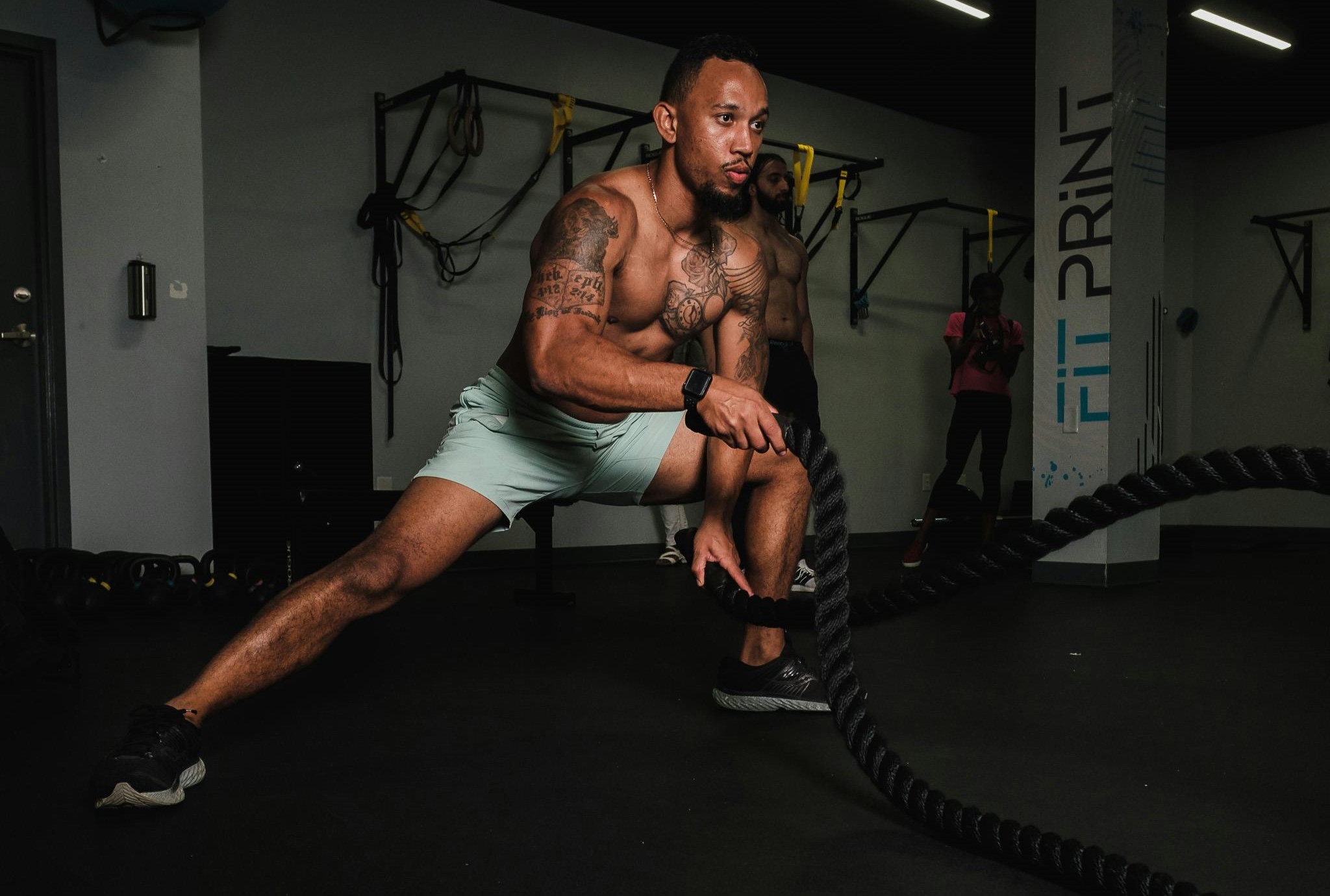The washboard abs or chiseled six-pack has long been a desirable physique. Having strong and defined abdominal muscles doesn’t just boost your confidence; it can also help diminish lower back pain and improve your stability and posture. We all know a six-pack doesn’t just happen overnight. So, how long does it take to get abs, and what’s the best way to achieve that sculpted look?
I get really bored of crunches, and I have to admit that I’m not a fan of repetitively crunching rep after rep. I find I can accomplish more if I mix up the exercises. Thankfully, there are a range of effective ab exercises to choose from. If you’re serious about getting to work and chiseling those abs, there are other factors to consider besides working out, including your diet and body fat percentage. Let’s look at how long it takes to get abs, top tips, FAQs, and some of the best exercises.
What is a six-pack?

The rectus abdominis is the major muscle in your abdomen. This flat band of fibers runs vertically from your pubic bone to under your ribs, and it helps hold your internal organs in place. You see the ‘six-pack’ appearance due to the six bands of connective tissue. The rectus abdominis is divided with a parallel right and left half, and each side is divided into three parts.
When people talk about abs, they usually refer to the five main muscles: internal obliques, external obliques, rectus abdominis, transversus abdominis, and pyramidalis. Your obliques are on the sides of your abdominal wall, and your transversus abdominis is the deepest of your abdominal muscles that wrap around your trunk. The pyramidalis is a small triangular-shaped muscle in your lower anterior abdominal wall.
Abdominal fat

Toning your abs with the right exercises is a key part of the picture, but you won’t see them if your abs are hidden under a layer of fat. Around 90% of body fat is subcutaneous and lies just under your skin, and the other 10% is visceral fat that’s under the firm abdominal wall and in the spaces around the intestines, liver, and other organs. Visceral fat has been linked to inflammation and an increased risk of conditions like heart disease.
How long does it take to get abs?

There’s no instant gratification when it comes to getting abs. The time it takes to get defined, stronger, visible abs varies depending on factors such as your:
- Genetics
- Body fat percentage
- Age
- Hormones
- Exercise routine
- Diet
Certain medical and metabolic conditions also slow the rate of fat loss.
It could take six to eight weeks for active individuals on the leaner side with lower body fat below 15%, or it could take a few months to a year or longer for you to achieve your goals. The more body fat you have in your abdominal area, the longer it will take.
As ripped fitness influencer William Li shares, he started his abs journey at 30% body fat, and within one month, he had dropped his body fat down to 23%. By two months, his body fat was at 19%, with visible abs starting to peak through. By three months, William Li reached 15% body fat and achieved visible, defined abs.
Factors to consider

You’ll need to consider your diet, exercise, and other factors to get the best results.
Body fat level

While there isn’t an exact body fat percentage for everyone, generally speaking, most fitness buffs like natural pro bodybuilder and powerlifter Jeff Nippard believe that in the range of 10-20% body fat will allow most men to see the muscle definition they want. Women carry more fat than men, so the estimates vary depending on your sex and age.
Research published in the Journal Obesity shows that the average man in the United States has about 28% body fat. The American Council on Exercise or ACE warns that a body fat percentage below 14% for women and below 5% for men can be considered dangerously low and lead to health risks.
The role of genetics

Of course, diet, exercise, and body composition are major players, but genetics also plays a role. Some people have thicker tissue and skin surrounding the rectus abdominis muscle, so it’s harder for those toned abs to show. Some people also have angled or asymmetrical tendons that wrap over the rectus abdominis, so their abs don’t quite look like a symmetrical washboard. Meanwhile, others will have more visible abs at a higher body fat percentage.
Diet and nutrition

Research shows that losing a significant amount of body fat requires dietary intervention. People have different approaches to diet and nutrition for fat loss. Some people choose to drop carbs and sugar and follow a low-carb or ketogenic diet, while others focus more on dropping calories. Natural, nutrient-dense, and unprocessed foods are always optimal when it comes to health, weight loss, and body fat loss. It’s also best to choose healthy fats rather than trans-fat-filled junk food.
The power of protein

Many people increase protein intake because protein helps you build muscle and maintain muscle mass. Research reveals that when trying to lose weight, individuals who consumed higher-than-average amounts of protein to the tune of 1.2 to 1.5 grams per 2.2 pounds of body weight improved body composition and preserved more lean muscle mass compared to those consuming average amounts of protein. The average amount of protein is 0.8 grams per 2.2 pounds of body weight. Protein-rich foods include meat, legumes, nuts, and dairy products like Greek yogurt.
Try HIIT and resistance training

High-intensity interval training torches calories and works your muscles. Cardio, along with weightlifting, is an excellent way to lose body fat. One study on overweight adolescents concluded that those who did strength training for 30 minutes and cardio for 30 minutes three times a week for one year lost more body fat and waist circumference than those who only did aerobic exercise.
Boost your overall functional fitness

Work on your overall functional fitness and explosive power with workouts like calisthenics and moves like pull-ups, push-ups, and box jumps.
Choose the right ab exercises

Building your ab muscles is a part of the picture, but you don’t have to do thousands of crunches to get there. Choosing a variety of ab exercises and working your whole core and your obliques is optimal.
FAQs

Do you need to do ab exercises every day to get abs?
Training your abs three times a week with rest days in between is enough to see results over time. Like most muscles, you need to give your abs time to rest and recover in between sessions.
Can you get abs without directly training your abs?
With so many factors involved, it is possible for some people to have more visible abs without directly training those muscles. However, most people get the best results by directly training and strengthening those muscles.

How long does it take for abs to show?
Depending on factors like your age, fitness level, diet, and body fat, it could take eight weeks, a few months, or over a year to achieve the visible abs you’re working towards.
Can you get abs in 30 days?
You can definitely make significant changes in just 30 days, but it’ll probably take you longer to really see those fully defined, sculpted abs. Try to set realistic goals and remember that it’s different for everyone.
Will 100 sit-ups a day give me abs?
100 sit-ups a day will help build core strength and muscular endurance, but most fitness trainers don’t recommend it. Not only is it a tedious, uncomfortable challenge to push through every day, but the best results come from a variety of exercises along with lifestyle changes. You’ll also need rest days for your ab muscles to repair and recover.
The best ab exercises to try

Here are some of the best ab exercises to try:
- Plank
- Side plank
- Deadbug
- Mountain climber
- Weighted crunches
- Squat-to-oblique knee crunch
- Dead hangs
- Bridge burner
- Dumbbell side bend
- Barbell back squat
Concluding thoughts

Washboard abs will always be a symbol of fitness and athleticism, but there’s no cheat code or easy route to getting that six-pack, and it requires dedication and consistency. With the right healthy eating and regular exercise, including cardio and strength training, you should see progress over time.




